My clinical interest is longevity, which is a function of lifespan and healthspan; In math parlance, longevity = f (lifespan, healthspan). Lifespan is pretty easy to define. It’s the number of years you live. Healthspan is intuitively obvious, but a bit harder to define. For simplicity, let’s agree that healthspan is a measure of how well, not necessarily long, you live. Further, let’s agree that one without the other—long lifespan with poor healthspan or short lifespan with rich healthspan—isn’t what most people want. This has the makings of a complex, nonlinear, multivariate optimization problem.
The figure below is from my office whiteboard last week. I was explaining the relationship between lifespan (x-axis) and healthspan (y-axis) to one of my patients. My goal is to move the black line to the blue one. Live longer (more x-axis) and live better (altered shape of decline curve).
I’m in the (very slow and time consuming) process of writing a book on this topic, which is really two books in one—the science of longevity and the “art” of it, the latter being a nuanced discussion about how one applies said science (most of it in animals) to the species of interest—people. If you don’t spend much time in the longevity literature, this distinction may not seem warranted. If you do spend time in said literature, it will be obvious why such a distinction is necessary.
Lifespan, at the first order, is driven by how long one can delay the onset of atherosclerotic disease (CHD, CVA), cancer, and neurodegenerative disease. Delay the onset of these, and you live longer. It’s a probabilistic truism. Obviously, I will explain this in great detail at the appropriate time, but I don’t want to focus on this topic today.
Healthspan, in its most distilled form, is about preserving three elements of life as long as possible:
- Brain—namely, how long can you preserve cognition (i.e., executive function, processing speed, short-term memory)
- Body—specifically, how long can you maintain muscle mass, functional movement and strength, flexibility, and freedom from pain
- “Spirit”—how robust is your social support network and your sense of purpose
In this post, I’d like to focus on one subset of healthspan: item #2—movement. But before I do, a brief digression will be helpful.
The hack—Darwin meets MacGyver
Evolutionary biology can, at times, provide a helpful framework for longevity. Our need for sleep and our resilience to short-term food deprivation are just two examples of traits that served our interests tens of thousands of years ago and continue to do so today. Some of the interventions that can make you live longer and live better will find their foundation in understanding evolutionary biology. But many won’t. That is, many things I (and others) argue are necessary for longevity don’t really have an obvious foundation in evolutionary biology. Why?
Enter “the hack.”
A hack is something we do that gets around a problem, even if it’s not especially elegant. A patch might be an easier way for some to understand what I mean (cf. software patch). The hack can be elegant, the hack can be cumbersome, but its purpose is the same—something is getting in the way of a desired outcome and we need a workaround.
When I talk with my patients I try to differentiate interventions I propose as “evolutionary sound” or as “hacks.” Inasmuch as this framework is helpful, let me expand.
Our evolutionary ancestors were primarily concerned with survival. There was no survival more important than reproductive survival—ensuring you lived long enough to reproduce. Natural selection would prioritize short-term survival over long-term survival or quality of life. [As a very interesting, but too-nuanced-for-now aside, the evolution of APOE genes from the E4 to E3 to E2 variants may be great examples of this…yes, this will be discussed in the book, space permitted.]
Take stress response as an example. The stress response was an essential part of evolution. Without it, fending off an animal trying to attack you, or hunting for food in a state of starvation would not have been possible. Nothing about our evolutionary development selected for, or rewarded, equanimity. Our ancestors probably did not have the luxury of inner peace. It’s also not clear if it would have been necessary, or even helpful. But I argue that our current environment places sufficient non-evolutionary stress on us, and, as such, a hack that separates us from this stress is, indeed, helpful. Furthermore, we now have the luxury of aspiring to things our ancestors could never dream of. They were preoccupied with reproducing and not dying; we aspire to play with our great grandchildren, we machinate on our legacies, we argue about if the Oscars are really inclusive enough.
Years ago, when I read Jared Diamond’s magnum opus, “Guns, Germs, and Steel,” I remember thinking to myself how horrible it must have been to have lived even as recently as just a few hundred years ago, let alone a few thousand years ago. It really had a profound impact on me, though it was not the central thesis of his book at all. I realized that on my “worst” day—lost my cell phone, got a speeding ticket or had a fender bender, missed my flight, got food poisoning from some bad sushi—it didn’t really matter. Technology and civilization took a bunch of really acute problems—lethal infections, starvation, trauma, war, for example—and traded them for more chronic ones—lower back pain, heart attacks, type 2 diabetes, and Alzheimer’s disease. I’m not minimizing the latter. These problems matter, but evolution didn’t confront them and therefore we can’t readily turn to evolutionary insights for solutions. Parenthetically, it might not have been as miserable as I imagine, namely because our ancestors didn’t know any better. It’s not like they would have “missed” Tweeting on their smartphones or racing around on their carbon fiber bikes, lamented the loss of their favorite sports team, or missed the pleasure of sipping neat Don Julio 1942.
Think about what Peter Parker’s uncle said to him shortly before he was killed, “Remember, with great power comes great responsibility.” I think of our modern lives as a great power, or a great privilege, to be more accurate, I suppose. I would never want to go back and live as my ancestors did tens of thousands of years ago (or even a hundred years ago, though it might make for a nice vacation) and so I should pause for a moment and acknowledge the complete privilege of living today in this incredibly narrow sliver of time. I love the internet. I love that agriculture and crop domestication have allowed me to live in civil society with dense populations and no fear of starvation. I love that a simple antibiotic can save my life from a formerly lethal infection. I love being able to sit down in a car or airplane, and I love the freedom those machines have brought me.
So if these examples of things I love are some of my great privileges, what are my great responsibilities? This is where hacks come in. We need hacks to prevent these great privileges from killing us—slowly—which they will do if we’re not deliberate. What are my hacks? A bunch of things that make virtually zero evolutionary sense but, if bolted onto my modern life, can give me—if I can thread the needle correctly—the best of both words.
Meditation, intermittent fasting, heavy compound joint and hip-hinge training, intense interval training, body work, supplements, drugs, introspection, sleep hygiene. These are my hacks. Let’s focus on one hack, in particular—movement preparation.
The savant of movement
I met Jesse Schwartzman through a mutual friend. After our first workout together I was blown away, but it wasn’t the workout that impressed me, it was the preparation routine Jesse put me through, prior to making me puke, that impressed me. I’d never felt more ready to move. Jesse’s formal bio is at the bottom of this page, but I just call him the savant of movement. One day Jesse and I were having coffee and he commented at how annoyed he was by the endless stream of “heroic” tweets and IGs of super-humans doing one-armed acrobatics or whatever the stunt of the day is. He commented, astutely, I noted, that the world needs another super-human trying to convince the rest of us we should be like him/her like it needs another dictator.
What we actually need are examples of how real people can be empowered to preserve muscle mass, move functionally, maintain freedom from pain, and be the best athletes of their lives. An “athlete-of-life” can hip-hinge, squat, carry, shift, push, pull, rotate, and anti-rotate with confidence and fluidity. On a deeper level, one should also re-connect to their childhood movement patterns, before the toll of life and technology wreaked havoc. We need to re-learn how to roll, crawl, and hang, which are patterns that can release the “brakes” from our everyday movement that sabotage strength and lead to pain and injury.
Watch a 2-year-old squat and you’ll know what I mean. They look like perfect little power lifters. By the time they are in grade school, and they’ve been sitting for hours a day, the first thing I see is tight hips. [Picture below courtesy my friend Pat Jak, also obsessed with correct movement.]
To that end, we decided to make a video of the exact warm-up sequence Jesse put me through so I could share it with my patients. If they (and you) find this video helpful, we’d like to produce more of these covering more specific topics, such as how to protect/ build/ rehab knees/ shoulders/ lower back, etc.
Before diving into the videos, I know at least one person is reading this and thinking, “What the hell is Attia talking about? He’s the king of doing stupid stuff like flipping 450-pound tires, swimming 12 hours, doing Tabata deadlifts…” And you’d be right. I do/did a lot of stupid stuff. But I always differentiate the stupid (“super-human”) stuff I do from the longevity drivers. My pet peeve, and that of Jesse, is that good people are misled by the heroics of big-personality super-humans who lead them to believe they need to do these things to live better. In reality, it’s almost always the opposite. You don’t have to do super-human feats to have great healthspan and, by extension, longevity. But you do have to do some very deliberate things to overcome our civilized environment. So while I call Jesse the savant of movement, he prefers to call himself the anti-super-human teacher.
Below are four videos, a brief introduction, and one video for each of the three stages of the warm-up:
- Tissue preparation
- Muscle activation
- Dynamic preparation
In addition, we’ve put together a “tear sheet” for each of the three stages in case you want take them with you to the gym until you commit to memory.
I should point something out, since I know it will come up. With the recent publication of Tim’s book, Tools of Titans, I’ve been getting a lot of requests to make a video of my so-called “Jane Fonda” routine. In Part II of the videos, below, I do a glute med activation exercise, but it is not the full sequence I describe in Tools. That’s ok…the form that Jesse and I demonstrate, coupled with the description in the book, should be sufficient to get you through the full routine of seven movements. For the purpose of movement preparation, one only needs a bit of activation (hence the vertical plane, only). What I describe in Tools is a therapeutic routine I perform once or twice each week.
Lastly, and most importantly, I want to thank Elliot Stern and Kelly Choi for shooting, producing and editing these videos from start to finish. If you could only see the outtakes…
Introduction
Here is direct link: https://youtu.be/ZVUQb2G_Mvw
Here is link to tear sheet, summarizing all three parts
Part I: Soft tissue preparation
Here is direct link: https://youtu.be/zdRgJpxifqA
Part II: Muscle activation
Here is direct link: https://youtu.be/JElEpnVH35Q
Part III: Dynamic preparation
Here is direct link: https://youtu.be/BGrw5z1SjtA
Jesse Schwartzman, MS, RD, ACSM CPT, holds a Master’s Degree in Nutrition and Applied Exercise Physiology from Columbia University, and is a Registered Dietician. Jesse, along with his wife Patty, currently owns and operates Fit4ward in NYC and the greater Fairfield County, CT, where he manages and engages in deeply personalized work with his clientele in all aspects of health.
Early on in his career, the importance of adopting lifestyle behaviors to support exercise and nutrition goals became a fundamental focus of his work. Joint mobility and tissue health, proper fascia and nervous system regeneration, fueling techniques, sleep and recovery, identifying asymmetries, and proper neuromuscular motor patterns are incorporated with every individual.
Jesse now has over 10 years of experience in the health and wellness industry in one on one personal training, nutritional counseling, health coaching, group workshops, and the corporate setting. Jesse previously trained clients at the highest certification level at Equinox Fitness Clubs, and managed Equinox’s most elite trainers and exclusive clientele in the Tier 4 Program at the “E” club.
Photo by Hidde Rensink on Unsplash


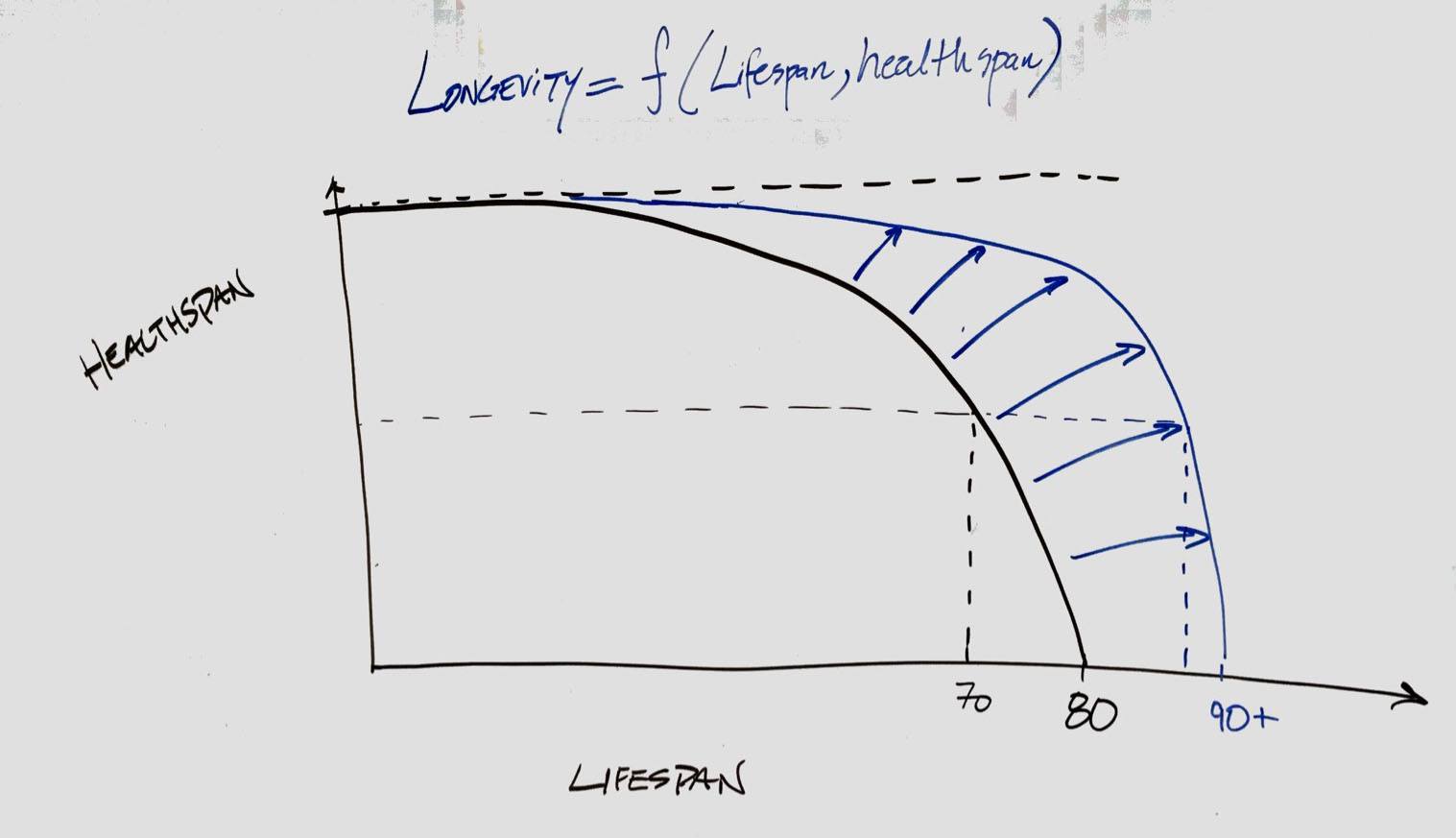

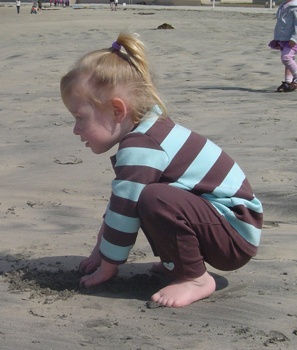
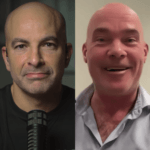

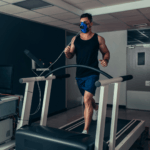
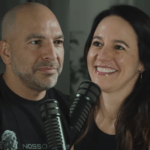
Hi Peter,
What are your stats on the big 3 powerlifts (squat, bench, deadlift)?
Phillip
In high school at BW of 158, I was 495, 275, 505. I don’t bench today and I don’t go below 5 reps on squat and D/L today, so no idea, but less than high school for sure.
Hello Peter,
I’m curious what the reason was that you gave up benching?
Thanks
Nice.
You can always use the formula from Wendler’s 5/3/1 book to convert rep maxes to estimated 1 rep maxes. He suggests mass + (mass * reps)/30.
I don’t know where it comes from nor why it works at all. But it does seem to give a reasonable result when I compare my 1RMs to other rep maxes.
Did you take one of Rippetoe’s courses yet?
Yes, I have. I would peg my max D/L today in the high 400’s, but prob not 500. Nowhere near my old numbers in squat.
Hi Peter. I just wanted to take a moment to let you know how much you inspire me and many others. I have no doubt you are a busy person. So the fact that you take time out of your day to share such valuable information, at no cost to us readers, is a testament to your character.
Yesterday I stumbled upon your 2013 Tedx talk regarding insulin resistance as a possible precursor to diabetes. While you may regret not showing compassion for your diabetic patient whose foot needed amputation, your love for others is made abundantly clear every time selflessly blog, participate in podcasts, or otherwise share what you’ve learned with the general public.
Thanks again.
That was supposed to say “precursor to obesity”. Ah well.
Chris, thank you so much for your kind words. Really means a lot and I’m glad you find this helpful.
Peter:
I echo Chris’ sentiments above; I couldn’t improve upon his praise, but it bears repeating.
As a non-competitive, not-anything-like-an-athlete kind of person, your digestion and regurgitation of the biochemistry, etc. is very useful for me. It wasn’t until I had numbers (aka, data) that I could really wrap my brain around NK, but also to explain it to my nurse practitioner (and I’m an RN, by the way!) I cannot use the information in a true “performance” situation, but I do perform everyday: in my job, my everyday life – and that counts! Yes, losing weight, not continuing onto the metabolic syndrome death sentence, etc. has been my primary motivation, but do I feel better? HELL YES – and for someone that has been on diets from hell that means a lot to me. It means I haven’t quit, and I don’t want to. It explains why I no longer feel compelled to eat when I only ate an hour ago, why I can fast for 18-24 hours without a whole lot of effort. I’m no longer hangry, ever.
Please don’t stop writing anytime soon. It makes a world of difference, if only to people like me. I refer to you and several of your colleagues whenever someone expresses interest because I work with the profession of slow-changers: healthcare professionals. If I can pique the interest of a single one, I consider it a minor victory.
With gratitude
Thank you, Paula. No end in site to the writing, either. Just signed to put my book together, so that will keep me busy for a while and hopefully make up for the sporadic blog posting.
“Just signed to put my book together”
Wawa Weewa!
Hope this means a book tour at some point, and you hit the podcast circuit including Joe Rogan’s.
Indeed.
Hi Peter and Jesse,
Firstly Peter thanks for everything that Eating Academy is and for everything you share.
My questions are probably more directed at Jesse. Can you direct me to research on Fascia that supports the activation/warm-up procedures in the videos? Particularly around the use of rollers and massage and the how and why this works. Also if you were able to suggest one or two books – of a textbook type (around this sort of muscle/sports physiology) that you would recommend I’d also much appreciate that. I’d like to use it to learn more about my Yoga practice as well as my sports and physical adventures.
Thumbs up to both of you for the videos and looking forward to some specific shoulder stuff…. Soon?
Thanks guys and keep up he good work.
Hi Greg. I am glad you found the videos helpful. There is a wealth of research on self myofascial release, which you can access easily, and you will find in consensus: foam rolling increases acute ROM right after therapy (10-20 minutes) long term ROM if done consistently over time, and that there is no statistically significant ROM difference between :30 and :60 or longer of soft tissue work (although longer foam rolling work may help alleviate DOMS) The important thing to remember is that foam rolling in not a panacea, no matter how crazy the soft tissues gadgets are becoming (spikes, cold, hot, vibration) no one foam rolled their way to better movement significantly. The soft tissue work is more of a tool to increase acute elasticity, and the lymphatic system. Then you need to do the real work to stretch and load the movement pattern.
Peter, you look awesome, skin and everything. Radiating. Surely biomarkers for ageing must have improved! You should got those measured!
My wife and me were wondering on what diet regimen you settled with now? VLCHF? Keto? Bullet? IF?
No particular regimen. I’m surviving and getting by as best I can with the limitations I’ve imposed on myself.
Great post. I am taking the ideas to the gym today. I realise I have been focusing too much on the HIIT portion and not at all or very little on the rest.
I am looking forward to your book.
A fascinating series, just wondering one thing. In the comments there’s talk about doing this in 10-12 minutes. Is that because the foam rolling gets very short? I’m just wondering because 40 seconds per place, 9 places that’s 6 minutes itself and 12 minutes assuming it’s 40 seconds per side.
More because you end up customizing the routine to your needs and certain movements can be shortened or even eliminated.
Comment #2453
Thoughts on cold exposure for healthspan?
And how is it kids tolerate cold water so well?
Appreciate the knowledge – Thanks
Hi Peter,
I’ve been following your posts and podcasts for a while and have learned a lot from them (thank you!). Where movement is concerned, have you ever looked at the Tracy Anderson Method? She was originally known as trainer to the stars, etc. but if you try her stuff, the woman has developed a huge database of movements that really enhance proprioception and are just great for the brain’s body map in general. I used to be a marathon runner and total gym junkie but I don’t think I have ever been as coordinated and balanced in my life. I do her workout almost every single day (for the past 6 years) and really feel like my body is aging gracefully. With all her novel positions and movements, I am sure she activates the brain a lot more than a lot of other fitness methods (all due respect to all sports though, moving is a good thing in general so I would never bash any other sport!). Anyway, I’d love to get your insight on her method.
Also, look into Z-health – these guys are all about movement and look at it from a neurological perspective rather than a purely muscular one. They do a lot of cool stuff, it’s worth checking out. And the guy who heads up, Eric Cobb, does a ton of blog posts and interesting videos on a regular basis.
Hi Dr. Attia,
Thanks for another great article and congratulations on your success with this patient. I have a question – if you’ve answered it elsewhere I apologize.
You said on the Tim Ferriss blog from Easter Island that rapamycin is a “gold coin”. But using it may be risky (your colorful analogy was to equate it to picking up that gold coin in front of a moving bulldozer).
What makes it so potentially special?
I believe down-regulating mTOR for purposes of longevity is easy – just limit protein intake. (in particular leucine). However, that makes muscle loss, sarcopenia , more likely with all of its attendant problems.
Can rapamycin turn down mTOR but still allow one to build muscle with a higher protein intake?
Thanks
-Eric
Possibly.
The explanations are great for why all these methods are so important. Any suggestions for alternative methods due to excruciating pain when doing them? With fibromyalgia many of these are too painful to do.
Peter, Jesse:
Great info on both installments for upper and lower body mobility! Would either of you have information or resources on flat feet and fallen/collapsed arches? I have been struggling to find any effective corrective exercises or treatments that can strengthen a collapsed arch? Am I chasing a unicorn by even trying to correct this problem or should those athletes with flat feet accept the condition? I’ve tested multiple avenues of treatment from going barefoot and minimalist shoes, short foot exercises, inversion exercises, single leg balancing, hip/knee strengthening, massage therapy etc. Over the years my running, walking and general lower leg performance has diminished, my Achilles and heel are constantly sore and I have spent time with a physical therapist to correct right/left side imbalances and gait correction. Does the collapsed foot cause upstream issues or is the flat foot a result from hip problems that trickle downward? Is there any hope?
Hey there! Not sure if this will get replied to as it’s been ages BUT I’d loveeee it if so 🙂
I do find that to get through all three videos does take a good while. I know that in the third video Jesse says that the movements in the that could all be completed in 5 mins after a while.
My questions: are all three videos something that should be ideally done daily? Done before every workout?
How long have you found it takes to get through all three videos once you get everything down?
Thank you so much and this, coupled with your podcast, has really given me a real focus on much needed self-care. I sincerely appreciate it! <3
Love it! My pt friends have confirmed this info and it’s my new warmup before competitive table tennis.
I like this interesting post, and human’s longevity can be indefinetely extended being discovered by Allen Omton and Serge Dobrow.
John Logger
Hi Attia – Is the book on longevity out yet?
Thank you so much Peter !!!
After many years of shoulder pain – I did the loaded exercises in this series – immediate pain relief – TOTALLY WONDERFUL
I’m truly amazed at the effectiveness of the protocols you research and develop.
BRAVO !!!!
These videos are great. I just listened to your 2017 podcast with Jocko Willink.
Glad to find this post still available. Jesse’s ideas seem to jive with Kelly Starrett. I’ll look around to see if you ever produced the videos you referenced in the article.